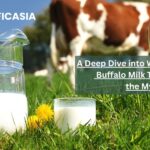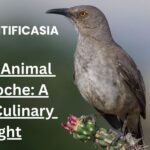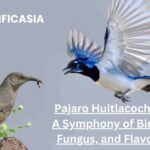Introduction:
Known as “Mexican truffle,” huitlacoche is a rare and highly valued culinary item that grows on maize. Scientifically speaking, it is a kind of fungus called Ustilago maydis that infects maize and results in the formation of huge, grayish-black galls on the ears. For decades, the earthy, rich flavor of huitlacoche animal has made it a beloved ingredient in Mexican cuisine, even though it may be considered an agricultural disease.
But there is no common association between the phrase “Huitlacoche Animal” and any particular kind of animal. The word “huitlacoche” itself comes from the Nahuatl language and refers to the fungus that develops on maize. It is a combination of “cuitlatl” (excrement) and “cochtli” (sleeping). If “Huitlacoche Animal” is a novel phrase or idea, further background information could be required to examine its applicability in issues about culture or science.
Despite not having a direct connection to animals in Mexican tradition, huitlacoche is nonetheless an interesting topic because of its cross-cultural appeal and value as a delicacy throughout history.
Associated Historical Context of Huitlacoche Animals
First, it’s important to clear up a frequent misconception. In Mexican cooking, a fungal illness called “huitlacoche” develops on maize. It has a rich, earthy flavor and is considered a delicacy in many parts of Mexico. However, the scientific name “Toxostoma cinereum” refers to a particular species of bird that is unrelated to the maize fungus. Although these two phrases can be confusing when used together, each has an interesting history and cultural significance.
Read More:
Unveiling the World of Nematodes
What is Shope Papilloma Virus and How to Prevent it A Comprehensive Guide
Features and Physical Description

Regional and narrative variations are noticeable in the huitlacoche animal’s physical description. It’s commonly portrayed as a little mammal with characteristics similar to those of a ferret or a weasel. That helps it disappear into the shadows because its fur is frequently described as being dark. In several tales, the monster is even said to have glowing eyes that gently glimmer in the night.
The Animal Huitlacoche is noted for having exceptional talents in addition to its morphological characteristics. Its purported ability to change shape, become invisible, and avoid detection is one of its most intriguing qualities. This feature has greatly added to the creature’s mystique and made determining its precise nature more challenging.
The Development of Huitlacoche Animal Traditions
The “Huitlacoche Animal,” or Groove-billed Ani (Crotophaga sulcirostris) as ornithologists refer to it, has become ingrained in Central American natural and cultural traditions, especially in Mexico. In the context of Mexican wildlife legends, this bird is also referred to by the name “Huitlacoche,” which is more frequently linked with a highly valued corn fungus. This illustrates the linguistic diversity of indigenous civilizations, such as the Nahuatl-speaking peoples.
Birds like the Groove-billed Ani have historically been vital to the health of regional ecosystems. Because they are exceedingly gregarious and frequently congregate in tiny flocks, they are seen as symbols of adaptability and community. These birds have grown close to the agricultural environments they live in over time, and by managing bug populations, they help keep fields and crops healthy.
Though the traditions around it have developed more quietly, the “Huitlacoche Animal” has a stronger connection to human groups than other cultural emblems. This demonstrates the close ties between culture and environment in Central America. The Groove-billed Ani is an example of the close cultural connections between animals and traditional legacy that may be found in Mexico’s biodiversity today.
Amazing search in nature of Toxostoma cinereum
The medium-sized bird Toxostoma cinereum is well-known for its unique call and behaviour. It is frequently found in certain regions of North America. Their natural camouflage from possible predators is facilitated by their greyish-brown plumage, which mixes flawlessly with their surroundings and is primarily found in shrublands.
Huitlacoche in Society: Not Just a Gastronomic Pleasure
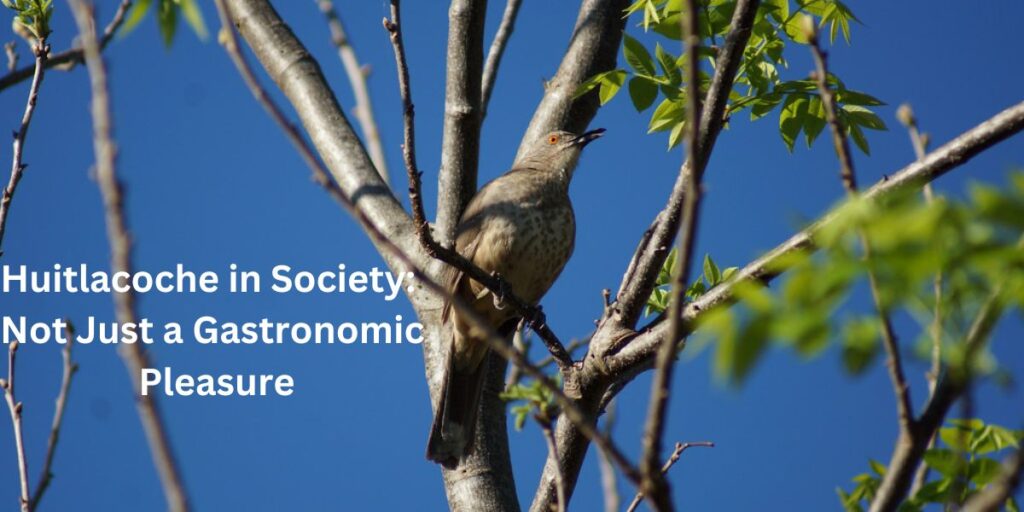
Going back to the kitchen, huitlacoche is a fungus that has a long history in Mesoamerican cultures. Native American tribes valued it for its distinct flavour and nutritional qualities long before it was considered a delicacy. Huitlacoche, which many would consider a crop disease, is in many ways the embodiment of the union of culinary skill and nature, elevating it from an afterthought to a sought-after component in haute cuisine.
Preservation Actions of Toxostoma Cinereum’s Heritage
Going back to the world of Toxostoma cinereum, it is important to recognize the difficulties facing this bird in the contemporary era. The population of this endangered species has fluctuated over time as a result of habitat loss and climate change.
From Farm to Feast: Huitlacoche’s Culinary Adventure
A fungus called Huitlacoche Pajaro, or corn smut, grows on corn kernels, causing them to become enormous, bulbous, and blackened structures. Huitlacoche is a favourite treat in Mexico, even though it’s usually seen as a nuisance in the US. The fungus’s rich, smoky flavour has been compared to that of truffles and mushrooms. A mainstay of Mexican cooking, huitlacoche is used in tamales, quesadillas, soups, and sauces. The Huitlacoche culinary journey exemplifies the innovation and resourcefulness of Mexican gastronomy.
Conservation of Toxostoma cinereum: Obstacles and Successes
In today’s quickly evolving environment, the conservation of Toxostoma cinereum, also referred to as the greyish-brown thrasher, has several difficulties. Predation, climate change, and habitat destruction are a few of the major issues facing this species of bird. Through breeding programmes, public awareness campaigns, and habitat restoration projects, conservationists actively try to address these issues. What matters most in the protection of Toxostoma cinereum are small victories, such as the establishment of protected areas and the successful rearing of birds in captivity.
A Quick Look at the Ecology of Toxostoma Cinereum
Toxostoma cinereum is found mostly in semi-arid and desert parts of North America. Shrublands and open woodlands are among its favourite habitats since they provide plenty of food and cover. Toxostoma cinereum is an important component of the ecosystem since it helps disseminate seeds and regulate pest populations because its diet primarily consists of insects and small fruits. This bird’s female constructs a cup-shaped nest in which she lays her eggs, exhibiting interesting reproductive and nesting behaviors.
Mouth Larva Causes and Their Impact on Humans
How Life Science is Evolving in the Modern Age
Academy of Bird Observation: Curve-billed Thrasher

Huitlacoche’s Cultural Significance
Huitlacoche Bird, which originated in the Aztec empire, has a special position in Mexican culture. Huitlacoche was known to have been consumed by the Aztecs, who valued its distinct flavour and health advantages. A mainstay of Mexican cuisine even now, huitlacoche symbolises the strong bonds that the people of Mexico have with their native country. The creative ways that home cooks and chefs alike have embraced huitlacoche to produce delectable and unforgettable dinners are reflected in the variety of dishes that use it, which showcases Mexico’s rich culinary heritage.
A Call to Action for Preserving the Legacy of Toxostoma cinereum
Governments, the general public, and environmentalists all have a shared responsibility for the protection of Toxostoma cinereum. This bird, with its colourful plumage and distinctive call, represents the natural beauty and richness of North America. Maintaining its legacy entails:
- implementing practical measures, such as preserving its environment.
- assisting with conservation-related projects.
- promoting laws that support the preservation of biodiversity.
It is an appeal to take action to protect the environment and all of its people for coming generations.
An exploration trip to accept the attraction of nature
Pajaro Huitlacoche and Toxostoma cinereum’s tale is a voyage of discovery that highlights the wonder and enchantment of the natural world. It illustrates the complex network of life on Earth and the unity of all living things. We develop a greater understanding of the natural world and the need to preserve it by learning about the history, cultures, and ecosystems of these two intriguing entities.
The Huitlacoche Myth’s Future
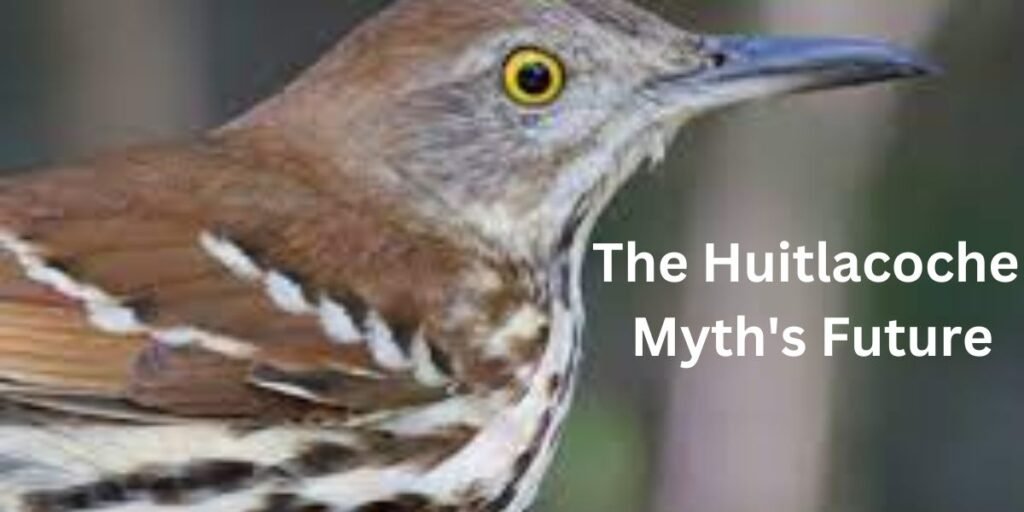
The legend of the huitlacoche animal has a lot of promise for the future. Reestablishing a connection with folklore and ancient traditions is becoming more and more popular as the world gets more digital and interconnected. With its intricate story and cultural value, the huitlacoche may contribute to the current folklore renaissance. As a storytelling tool, it can keep developing and changing to suit new audiences and media, preserving the huitlacoche’s legacy and its lessons for future generations instead of erasing them.
Final Verdict
The Groove-billed Ani, also referred to as the “Huitlacoche Animal,” is an intriguing illustration of how culture and animals coexist. Despite being more frequently linked to the similarly named culinary fungus, this bird has a distinct place in Central American ecosystems and customs, particularly in Mexico. It is an essential component of the agricultural landscapes it lives in because of its social character, adaptability, and capacity to regulate insect populations.
In both traditional and modern cultures, the Groove-billed Ani is a symbol of resilience, unity, and communication. Its representation in everyday life, art, and folklore illustrates the close ties that exist in the area between the people and the natural world. The nuanced customs associated with this bird serve as a reminder of the value of protecting both cultural heritage and biodiversity.
The “Huitlacoche Animal” is a symbol of the natural world’s abundance and the influence it has had on human cultures. Its tale inspires us to value and preserve the wildlife that is important to our common past by showcasing the wonder of the connections that exist between different species and cultures.




